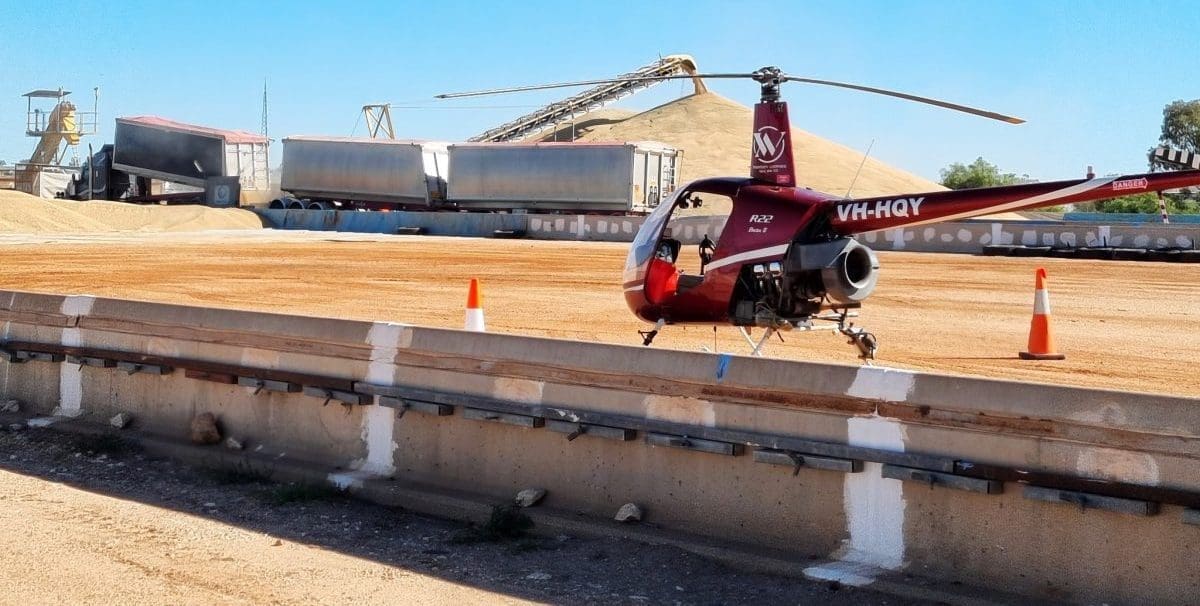
SOUTHERN feed wheat and barley prices have dropped around $10-$15 a tonne in the past week, reflecting an improving outlook for harvest and deliveries.
The welcome arrival of dry weather over central and northern New South Wales has allowed growers to get moving, mostly on canola and barley, while in Queensland, harvest is over, or close to it, on many farms.
The quality picture is further developing, with low test weight an issue in many barley samples in eastern states, and low protein rife in wheat.
However, consumers have ramped up coverage into January, and with a week of fine weather forecast across southern Australia, rapid progress in harvest and deliveries is expected.
| Prompt | Nov 17 | Jan-Feb | Nov 17 | |
| Barley Downs | $365 | $360 | $373 | $370 |
| SFW wheat Downs | $385 | $385 | $390 | $385 |
| Sorghum Downs | $420 | $430 | $385 | $380 |
| Barley Melbourne | $395 | $410 | $370 | $385 |
| ASW Melbourne | $480 | $460 Nov 10 | $425 | $440 |
| SFW Melbourne | $460 | $480 | $405 | $415 |
Table 1: Indicative prices in Australian dollars per tonne.
Northern advance
Many growers in central and south-west Queensland are in their finals days of harvest if they haven’t finished already, and trade sources report SFW and H2 have been the dominant wheat grades.
H2 has been snapped up by flour millers, and SFW is selling into feedlots looking for an alternative to the relatively expensive barley.
“Given the price difference between barley and wheat, there’s got to be more wheat going into rations,” one trade source said.
The minimum test weight for BAR1 barley is 62.5 kilograms per hectolitre and many crops are weighing in at more like 58-60kg/hL.
Yields for wheat and barley have generally been well above average, with plenty of reports of wheat and barley going 5t per hectare.
“Yields have been exceptional, and the milling sector’s more relaxed than it has been.”
This has been reflected in a drop of around 15 per cent in H2 delivered Brisbane prices, now at $510/t, and down from more like $620/t a fortnight ago.
While falling numbers have been an issue for some CQ crops, Western Downs and NSW border crops appear to have mostly escaped sprouting.
“Southern Queensland has dodged a bullet.”
Harvest of NSW cereals north and east of Moree is also finished, or close to it, for most growers.
On the Liverpool Plains, the barley harvest is well under way, and wheat has just started.
“Test weights are letting down some barley, but it’s generally been pretty good,” Hunt Ag Solutions principal Jim Hunt said.
Waterlogging is making harvest difficult or impossible on floodplain country west of the Newell Highway, where crop losses are considerable.
Logistics has received a fillip this week with the November 18 announcement that ARTC expects to reopen the Moree-Narrabri rail line tomorrow to enable trains hauling bulk and containerised grain from Moree to get to domestic consumers and port.
The line was closed over winter to allow an upgrade for ARTC’s Inland Rail project, and was originally scheduled to reopen by November 1.
In a statement, ARTC said “extensive and prolonged inclement weather” across NSW had delayed the commissioning of the upgraded track.
“Following the completion of required works, we anticipate the line will be operational again on 25 November,” ARTC stated.
“ARTC, together with the Inland Rail construction team and partners, has been working hard to have the line complete in time for the commencement of the grain harvest season.
“However, the bad weather severely limited access to Inland Rail work sites, which led to an impact on works on the Narrabri to North Star Phase 1 project.
“Although no major damage was caused to the line, a full assessment of damage and impacts was undertaken, and some repair works were required on sites that were still under construction.”
South makes progress
With rain in NSW in the past week mostly confined to the state’s far south and south-east, growers and carriers have got volume moving as flood waters recede and roads re-open in many districts.
The caveat is that flooding has significantly damaged roads, and travel times are considerably longer now than pre-flood.
As in the north, light test weight appears to be more of an issue in barley than wheat.
Wilken Grain trader Andrew Kelso said early harvest reports indicate BAR1, BAR2 and BAR3 feed grades all appearing at the sample stand.
“There’s a bit of barley coming off in the Mallee, and it’s a mixed bag,” Mr Kelso said.
While some parts of the Victorian grainbelt have enjoyed a dry week to 9am today, others have had considerable rain, and registrations include: Horsham 16 millimetres; Jeparit 27mm; Nhill 18mm; Ouyen 34mm, and Woomelang 36mm.
Some locations spreading into NSW have also had strong winds and hail, but the forecast for single-digit falls for the rest of this month is cause for hope for consumers as well as growers.
“They’ll wait to see what harvest looks like and then elevate buying; they just have to get through the next two or three weeks.
“There’s going to be BAR1 and off-spec barley, plenty of ASW, and plenty of SFW; from a stockfeeders’ point of view, time’s their friend.”
Protein hay supply is expected to be limited as a result of flood and rain damage to lucerne and vetch crops, and faba beans that fail the appearance test because of infestation with the chocolate spot fungus are tipped to make up some of the shortfall.
“Off-spec faba beans will certainly find their way into feed rations.”



HAVE YOUR SAY